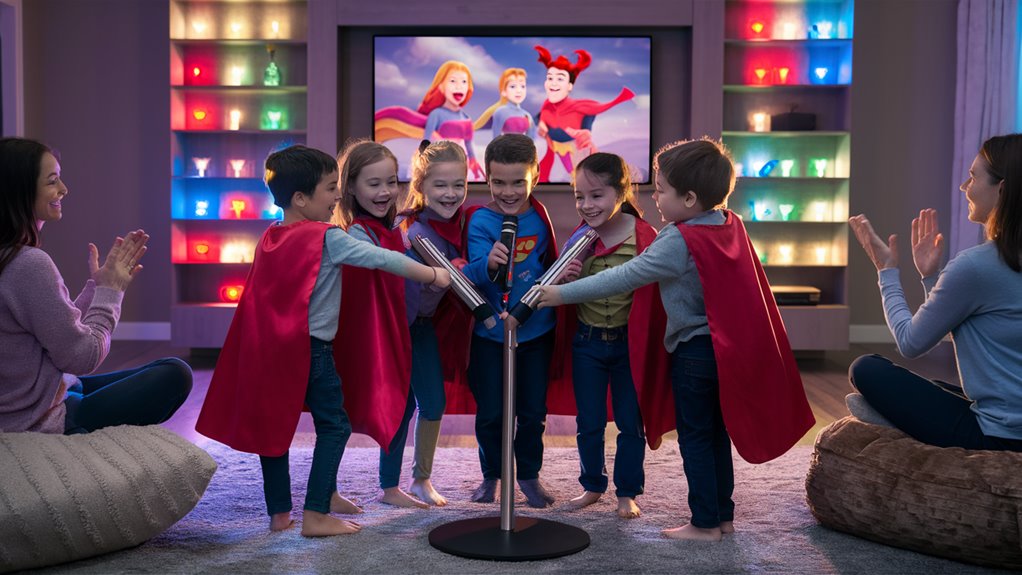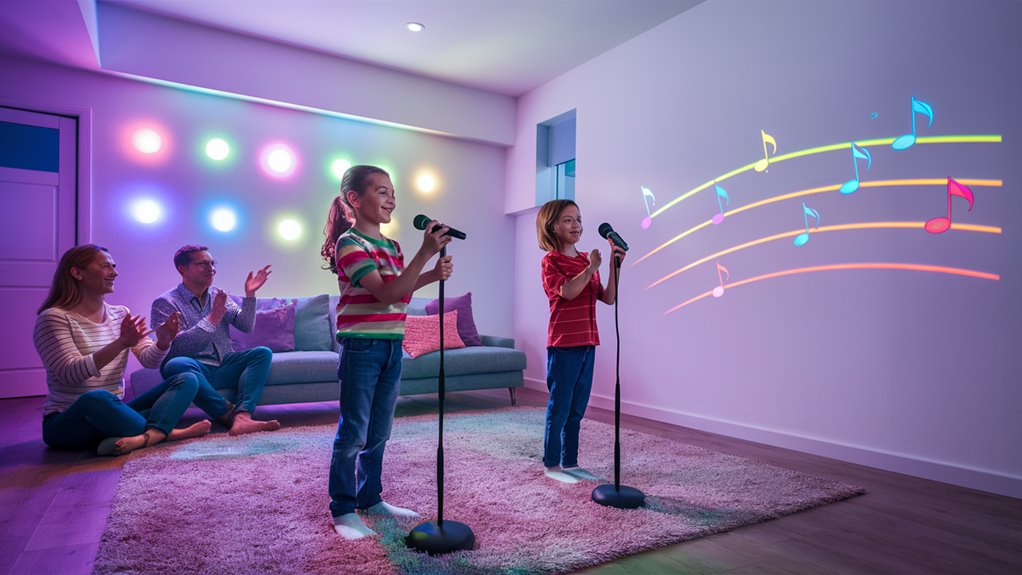How to Set Up a Great Karaoke Time for Kids

Create a Safe Karaoke Spot for Kids
Make the best spot for kids’ karaoke by using a place with karaoke creates safe mats on the ground and good lights. Put chairs in a half-circle so the crowd can join in and see well. Use nice speakers with sound that is not too loud for little ears.
Choose Songs for Kids
Build a long list of songs with:
- Disney songs and movie tunes
- Sesame Street songs and more
- Well-known kids’ songs with simple words
- New, safe, and happy songs
Add Fun Parts and Tips for Singing
Make the karaoke more fun with these cool bits:
- Take turns in leading songs
- Dance breaks with music
- Singing games for groups
- Sing with a buddy
Bring in Props and Tools
Add safe tools for the show:
- Microphones right for kids
- Easy hats and scarves
- Stage lights that change colors
- Big and clear song words
Manage Kids’ Behaviors
Set clear rules for karaoke fun:
- Turns for each singer
- How the crowd should be
- Cheer in a kind way
- Set time for each song
Turn any place into a joyful music spot where kids can build their trust, get better with others, and share their fun with songs.
How to Pick Songs for Kids’ Karaoke: The Full Guide
Must-Haves for Kids’ Songs

Songs right for families and songs with good words are key for great kids’ karaoke picks.
Disney and fun movie songs are good to start, with top ones from Frozen, Moana, and The Lion King.
Top Songs for Young Stars
Songs from Movies They Love
- “Let It Go” from Frozen
- “How Far I’ll Go” from Moana
- “Hakuna Matata” from The Lion King
- “You’ve Got a Friend in Me” from Toy Story
Fun Learning Songs
- Sesame Street songs
- Paw Patrol theme songs
- YouTube songs they learn from
- Songs that teach while they play
Make a Great Playlist for Kids
Add lots of song types to keep it fun, mix quick songs with slow ballads.
Keep songs short, 2-3 minutes, for the best fun and focus.
Check songs first, to make sure they’re okay, and let kids pick from choices you like.
Keys to Good Song Picks
- Simple words
- Happy thoughts
- Good range for kids
- Tunes they know
- Clear beats
Add songs for holidays, fun times, and new cool songs for kids to make a mix that brings kids back to sing more.
Set Up the Best Spot for Karaoke
Pick the Singing Spot
Choose a karaoke place in any room. Find a space with room to move, far from things they might break or sharp edges.
Make a spot for the show with safe mats or bright floor signs. This sets a safe, fun place for kids while they sing.
Think of Good Lights and Safety
Nice lights make the show feel real and help everyone see well. Use LED strips and spotlights on the stage.
Don’t use lights that blink too much, and keep all wires safe along walls or under covers to avoid trips.
Place the Crowd Smartly and Set Up Gear Right
Place where the crowd sits in a good half-circle facing the stage on comfy seats. Keep sound tools safe on strong stands at a good height for kids, keeping gear safe.
Set speakers right and tune sound to make it clear without odd noise. Add cool music stuff in the room like nice posters but make sure it doesn’t distract from the show.


